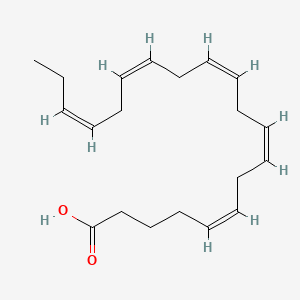| Yoshikata R et al. |
Relationship between equol producer status and metabolic parameters in 743 Japanese women: equol producer status is associated with antiatherosclerotic conditions in women around menopause and early postmenopause. |
2017 |
Menopause |
pmid:27676633
|
| Mirabi P et al. |
The role of fatty acids on ICSI outcomes: a prospective cohort study. |
2017 |
Lipids Health Dis |
pmid:28109274
|
| Lee Y et al. |
Analysis of endogenous lipids during intestinal wound healing. |
2017 |
PLoS ONE |
pmid:28800645
|
| Muralikumar S et al. |
Probing the intermolecular interactions of PPARγ-LBD with polyunsaturated fatty acids and their anti-inflammatory metabolites to infer most potential binding moieties. |
2017 |
Lipids Health Dis |
pmid:28109294
|
| Ballantyne CM et al. |
Icosapent ethyl (eicosapentaenoic acid ethyl ester): Effects on plasma apolipoprotein C-III levels in patients from the MARINE and ANCHOR studies. |
2016 May-Jun |
J Clin Lipidol |
pmid:27206952
|
| Park HG et al. |
Metabolic fate of docosahexaenoic acid (DHA; 22:6n-3) in human cells: direct retroconversion of DHA to eicosapentaenoic acid (20:5n-3) dominates over elongation to tetracosahexaenoic acid (24:6n-3). |
2016 |
FEBS Lett. |
pmid:27543786
|
| Gold DR et al. |
Lung VITAL: Rationale, design, and baseline characteristics of an ancillary study evaluating the effects of vitamin D and/or marine omega-3 fatty acid supplements on acute exacerbations of chronic respiratory disease, asthma control, pneumonia and lung function in adults. |
2016 |
Contemp Clin Trials |
pmid:26784651
|
| Lee CT et al. |
Resolvin E1 Reverses Experimental Periodontitis and Dysbiosis. |
2016 |
J. Immunol. |
pmid:27543615
|
| Medema S et al. |
Levels of Red Blood Cell Fatty Acids in Patients With Psychosis, Their Unaffected Siblings, and Healthy Controls. |
2016 |
Schizophr Bull |
pmid:26385764
|
| Shi H et al. |
Application of a delta-6 desaturase with α-linolenic acid preference on eicosapentaenoic acid production in Mortierella alpina. |
2016 |
Microb. Cell Fact. |
pmid:27364006
|
